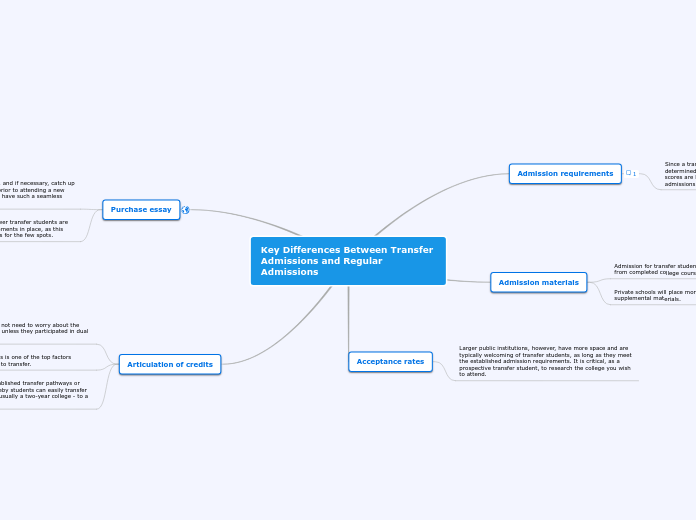Key Differences Between Transfer Admissions and Regular Admissions
Admission requirements
Since a transfer student's ability to succeed is mostly determined from his or her academic record, SAT and ACT scores are less important than they are in freshmen admissions and may not be requested.
Admission materials
Admission for transfer students is largely based on grades from completed college coursework.
Private schools will place more emphasis on these supplemental materials.
Acceptance rates
Larger public institutions, however, have more space and are typically welcoming of transfer students, as long as they meet the established admission requirements. It is critical, as a prospective transfer student, to research the college you wish to attend.
This allows students to save money, and if necessary, catch up on any developmental coursework prior to attending a new university. However, not all colleges have such a seamless transfer process.
Colleges that intentionally admit fewer transfer students are less likely to have articulation agreements in place, as this may attract more transfer applicants for the few spots.
Articulation of credits
Freshmen applicants often do not need to worry about the articulation of transfer credits unless they participated in dual enrollment courses.
However, articulation of credits is one of the top factors influencing a student's choice to transfer.
Many public schools have established transfer pathways or articulation agreements whereby students can easily transfer credits from one institution - usually a two-year college - to a four-year college.
